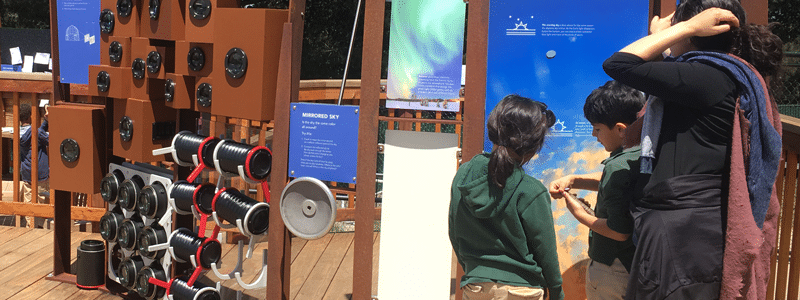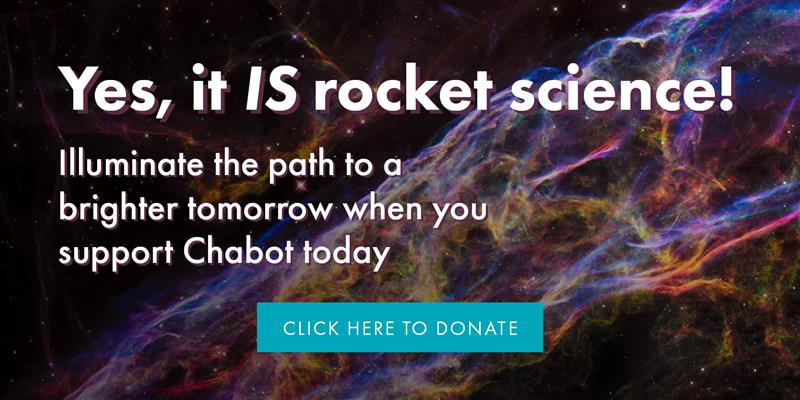Observation Deck

The Chabot Observation Deck is Chabot’s newest permanent Exhibit that invites visitors to observe the world around them in new ways. Opened in April 2018, the 3200 sq. ft. exhibition area features 12 interactive stations. The Observatory Deck expansion was made possible through Measure WW funds. Exhibits were designed and build by the Exploratorium.
Sound Observatory:
The Sound Observatory is an environmental sound experience that samples the universe at all scales. Sonified earthquakes, quarks and songbirds are all at the fingertips of visitors willing to spend some time observing the universe with their ears. Sounds have been collected from NASA’s sound library and field researchers who utilize sound’s unique capacity to “see” the world in new ways.
Heat Camera:
The stationary Heat Camera allows visitors a window into a sliver of the light spectrum that is otherwise unavailable to the human eye– infrared. A camera sensitive to infrared light picks up the heat emitted by visitors on the deck and displays it as a color image on a large screen. Warmer objects emit more infrared light than cooler ones, and different parts of the body are often different temperatures, as revealed by the camera. Similar to the stationary Heat Camera exhibit, the portable heat camera exhibit allows visitors to see a color image of the infrared spectrum. With the portable device however, visitors can control the direction of the heat camera with a handheld device.
Big Dipper:
The Big Dipper exhibit will help illustrate how we perceive the night sky on Earth. From one vantage point on the deck, visitors will be able to see the Big Dipper constellation clearly. From the side, however, visitors will see that the “stars” that make up the big dipper do not exist in the same plane but are in fact and all at different depths from the viewer. To highlight this further, a small model that can be viewed at multiple angles will accompany this exhibit.
Telescope Pad:
The telescope pad is isolated from vibrations of the deck, making high-magnification observation possible. Separated from the architecture of the deck and weighted to provide a stable surface, this platform is critical for successful instrument use. When scopes are not installed, this platform can be activated with programming once a day to track the sun’s placement in the sky or simply fade back into the architecture of the deck.





